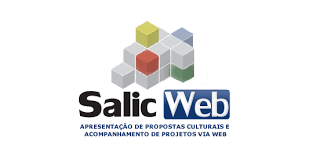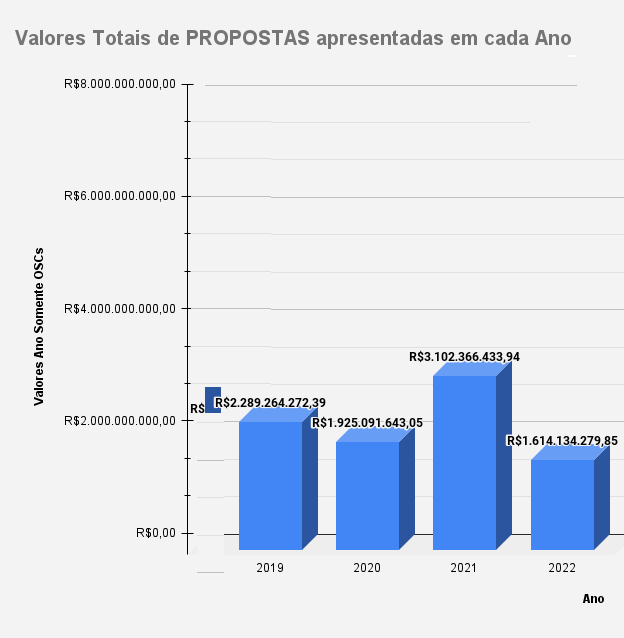For the Third sector What is the Bolsonaro Government's credibility index?
Author: Rubens Santana
Hello everyone, how are you all? I hope so. Well, I'm closing out the year 2022 with this matter: For the Third sector What is the Bolsonaro Government's credibility index? I believe the content is relevant and interesting, as it was a surprise for me, I will explain below why this was a surprise. As I was saying, the content is relevant because it brings, first hand, a survey that I carried out, of all the values, transformed into proposals, and which were presented in the More Brazil Platform and in the System SALIWEB.
Each of these systems has its own peculiarities and exclusive specificities, as each one has well-defined purposes and serves different audiences.
MORE BRAZIL PLATFORM
A +Brasil Platform constitutes an integrated and centralized tool, with open data, intended for the computerization and operationalization of transfers of resources originating from the Tax Budget and from Union Social Security to a body or entity of the state, district, municipal, direct or indirect public administration, public consortia and private non-profit entities, (our case in this study). All those who wish or need to receive resources from the Federal government through projects or proposals, they should use this system to present two demands.
I clarify, however, that not all public resources originating from Unity pass through +Brasil Platform, there are many exceptions. Thus, the survey carried out by me in this work aims solely to expose a substantial collection of proposals presented on that platform, to demonstrate and illustrate the theory developed in this text. In other words, the data collection extracted from the aforementioned platform and described in this work is not complete and much less exhaustive.
Our survey carried out through +Brasil Platform aims to verify the maturity of the Law No. 13,019/14, Regulatory Framework for Organizations Civil society – MROSC. in relation to actors who deal directly or indirectly with the aforementioned law. In this case, we are talking about Funders, (National Congress, through Senators, Federal Deputies, Commissions, Benches, notices, ministerial programming resources, reporting resources, etc.), as well as the Granting Bodies, (Ministry, Public Authorities, Public Foundations), and, in our case, in this overview, the Covenant Bodies, here, we will deal exclusively with the Organizations of Civil society – CSOs, in this context we are talking about Associations, Religious Associations, Foundations, OSCIPs, OSs, Unions, Cooperatives that fall under the MROSC.
Before proceeding, I want to present my theory on the subject here. The regulations related to the transfer of resources between the Federal Public Power and the Organizations of Civil society – CSOs, has always been a thorny subject by nature, firstly, because of the conceptual and legislative limbo, and because of the lack of knowledge on the part of funders and the companies themselves. CSOs.
Before 2014, there were several pieces of legislation that dealt with the subject and theme, which had a negative impact on the choice of financiers. It was foolhardy to indicate resources for CSOs, because the laws were unclear, if not confusing and conflicting.
There was the possibility of a parliamentarian indicating resources for a THE C and then having to justify the choice, or face the possibility of an execution of dubious quality, or even having your appointment, sort of, being criminalized, as the THE C did not manage resources well, or sometimes misused public resources.
This all ended up impacting the choice of funders, which, according to my understanding, marginalized the indications of resources by funders to CSOs.
Well, before that, I saw the Law no. 13.019/14, extremely with good eyes. For me, it was a watershed, it would be the before and after the MROSC. According to my analysis, there would be more trust between Federal Funders and the CSOs, since you would have, from that moment on, complete, robust, well-defined legislation on the subject, and on the requirements, limits and prerogatives in the transfer of resources between Federal Public Power and the Organizations of Civil society.
MY THEORY
For this analysis I made an overview of the gross values of the Proposals presented through the +Brasil Platform, for, and by Organizations of Civil society – CSOs, in the period of 2015 until the end of the year 2022.
So, at first, I thought that I would see through the analysis of the numbers, over the years, and be able to verify the ripening and the trust of this relationship, between financiers It is CSOs, with onegradual and staggered increase in these indications, transfers and registration of proposals.
Well, below is the graph with the gross values per year of proposals presented in the +Brasil Platform.
In the 8 years analyzed in the Graphic above we have two periods It is three distinct governments. Let's try to explain the political, social and economic context of the graph.
PRESIDENT DILMA
A President Dilma Rousseff was elected to the mandate of 2011 The 2016. She was the first woman elected president of Brazil. He sought to continue the policy of combating poverty, but his government presented difficulties in economic policy, facing difficult years of recession.
However, it was exactly during her government that the MROSC. Quite a merit for a Ruler. However, during his term with the strengthening of the opposition, errors in the conduct of economic policy and the advancement of the Lava Jato operation paved the way for an impeachment process to interrupt his second term.
As president representing the Workers' Party – PT, had a strong concern with the public policies of the Third sector.
PRESIDENT MICHEL TEMER
O President Michel Temer, 2016 The 2019, previously vice president, assumed the presidency with the removal of the president Dilma Rousseff in 2016. During his government, he adopted an economic policy of austerity. He wavered in office due to corruption scandals, but remained until the end of his term, mainly because he had support from the Legislature.
As a representative of the ideological spectrum known as the center, he presented a moderate concern regarding public policies that affect the Third sector and consequently the Organizations of Civil society.
Like his government, he was considered a buffer mandate, only two years, it was not possible to perceive a well-defined policy for the Third sector, ended up continuing the new legislation that was in force after the promulgation of the MROSC.
PRESIDENT BOLSONARO
Lastly, so far, in 2022, we have the President Jair Bolsonaro 2019 The 2022. His administration was involved in a series of controversies and several of the ministers who had originally been appointed left their positions[64] and criticized the government.[65][66][67][68] A Bolsonaro's response The COVID-19 pandemic in Brazil was also rejected in the entire political spectrum and pointed out as denialist,[69][70] after he minimized the effects of illness,[71][72] defended treatments without proven efficacy,[73][74][75] discouraged the vaccination,[76][77] the use of protective masks[78][79][80] and measures to social distancing,[81][82][83][84] and postponed the purchase of vaccines,[85][86] attitudes that contributed to the occurrence of up to 400,000 preventable deaths[87] in total more than 600 thousand deaths registered in the country during the pandemic.[88] His actions during the health crisis led to him being sentenced in Permanent People's Court per crime against humanity.[89] In the 2022 elections, was defeated in the second round by Luiz Inácio Lula da Silva (PT), being the first president of Brazil to fail to be re-elected since the institution of re-election in 1997.[90]
As a conservative and representative of the ideological wing considered as right-wing, and by others as extreme right-wing, he presented and still presents little affection for the Third sector, demonstrating in many cases a certain contempt and marginalization of groups from or originating from this sector.
An emblematic case was your government's relationship with the legislation that regulates the cultural sector, but specifically in relation to the incentive legislation on the Income tax, Rouanet Law, who is knowledgeable, has a foot in the cultural, artistic and representation of the Third sector.
Used the legislation of the Third sector to include a sphere with little relationship with the cultural area, the Christian and evangelical sector, including Religious Associations as Organizations of Civil society – CSOs.
I think such inclusion is commendable, there really are many organizations with origins in religious niches that have exceptional work, and which, until recently, did not have any recognition from the federal government, for example: organizations of African origin, churches Catholic and Christian groups.
Did the same in Rouanet Law, included organizations of African origin, Catholic churches and Christian groups as producers and developers of cultural products being reached by the tax exemptions from the Unity.
Graphic Analysis
Well, back to the analysis of the graphic above, let's go to my considerations and analysis.
Following the logic of the reasoning extracted from my theory, we really 4 first years of the legislation, the MROSC it evolved gradually, there was a small decrease in 2016, leaving 2 billion and one hundred million in 2015 for 1 Billion and nine hundred million in 2016, but Soon after, in the years of 2017 It is 2018 there was gigantic growth, 4 Billion eight hundred million in 2017 It is 6 Billion eight hundred million in 2018.
In 2015 for 2016 there was a loss of – 9,7%, in the amount in values of proposals presented, of 2016 for 2017 there was an increase in 147,27% it's from 2017 for 2018 there was an increase in the order of 42,79%.
In 2015 The 2018 O “trust index” in terms of percentage growth, let's say, it was on the order of 218,82%, that is, a big trust index.
Until that moment, 2018, we could say yes, the MROSC was a government policy implemented with complete success, at least in terms of "acceptance" it's from "trust". Even because, before the MROSC there was just a swamp of legislation with little or no light to light the way.
GRAPHICS – VALUES AND % OF PROPOSALS PRESENTED BY UF
BOLSONARO GOVERNMENT
However, after the election and inauguration of the President Bolsonaro and during the following years of 2019 The 2022 There was, first, a clear and substantial decrease in mood, both financiers how much of convents.
Well, from the graph we can already see that in the Bolsonaro Government the Proposal values presented in the +Brasil Platform returned to the 2015 level, from the first effective year of implementation of the Regulatory Framework for Organizations Civil society – MROSC, 2015. In 2015 the value of R$ 2,161,850,635.61 is at 2019 R$ 2.289.264.272,39.
In 2019 for 2020, there was a loss of order of -15,91%, in 2020 for 2021 an increase of 61,15% it's from 2021 for 2022 a loss of -47,97%.
In the general calculation of the Bolsonaro administration, 2019 The 2022, in four years there was a variation in terms of "loss of confidence" in the order of -29,49% in relation to the percentage of proposals presented in the +Brasil Platform.
We would say that the “trust index” of, and in Bolsonaro Government in relation to the Third sector suffered suspicion on the order of approximately 30%. For the Third sector, O Bolsonaro Government It came out smaller than it entered.
Now if we compare the indices of the Bolsonaro Government with the two years of President Dilma and Michel Temer, we will realize that the numbers are more frightening.
If we calculate the sums of the total values of proposals presented +Brasil Platform us 4 years of Dilma government It is Michel Temer, on the order of approximately 15 billion eight hundred million and of 4 years of Bolsonaro Government, about 8 Billion nine hundred million, we will see that there is a difference, downwards, of the order of -43,60%.
This way we can "claim", “categorically”, which the Bolsonaro Government he was -43,60% less efficient for Third sector in his mandate compared to the 4 years of Government previous.
CONCLUSION
So guys, having completed my analysis, I leave here my notes for you to examine and verify the information and interpretation.
Knowing how a Government treats its Public Policies is essential so that we can evaluate it. As a result, I carried out the above analysis of the volume of Proposals presented in the +Brasil Platform, over the last 8 years, from 2015 to 2022, aiming firstly to verify the maturity and acceptance of the Regulatory Framework for Organizations Civil society – MROSC which was promulgated in 2014 for the President DilmThe.
This milestone was a watershed as it established a more efficient system for transferring resources from the Unity, in our case, for the Third sector.
However, during the analysis I realized that the evaluation itself could establish an index of acceptance of the legislation and the Governments that manage it, since managers are direct influencers of the acceptance of public policy.
Therefore, depending on the volume of proposals presented and the differences from one year to the next, I used it to establish this “trust index”. It is clear that this index cannot be treated as scientific data, it only serves so that we can try to carry out a non-academic analysis of how the three governments treated public policies that affect the Third sector.
All information provided in this text was taken from the +Brasil Platform, and are available for anyone to access in this LINK, in the tab: "Free access".
In the next article, I will do the same analysis, but on the contents of the last 8 years from the SALICWEB Platform which presents all the proposals, as well as all fundraising, name of the financiers and amounts contributed in each of the proposals presented in the Roaunet Law in the period.








